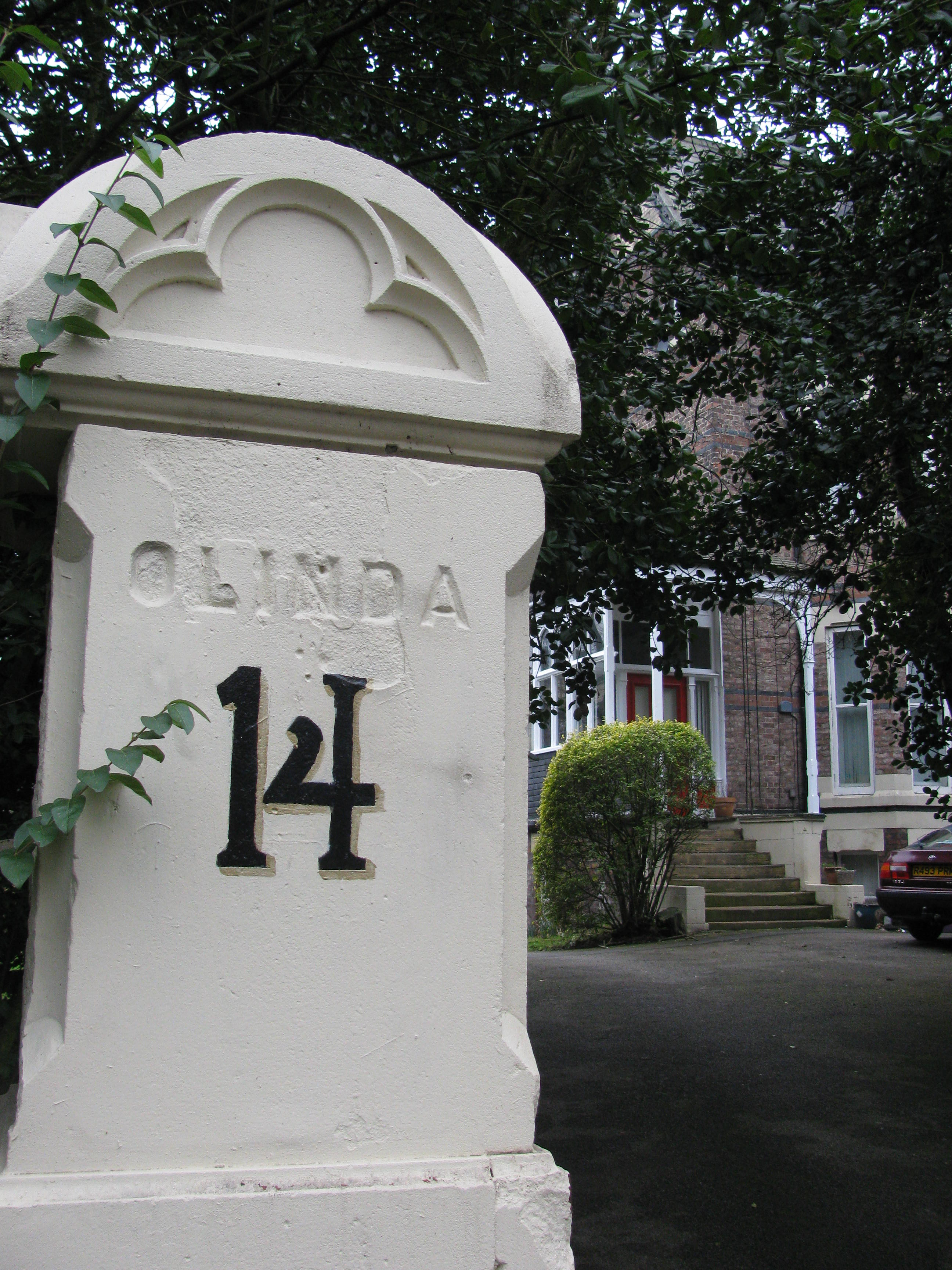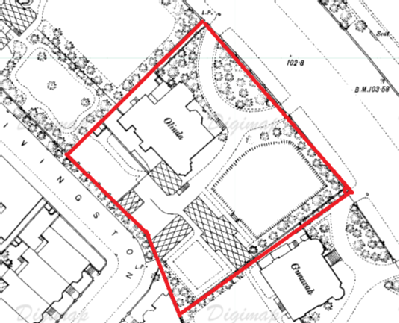Olinda, Aigburth Drive, Liverpool
 Olinda is one of very few Hispanic Liverpool villas that is not only still standing, but also still bears its original name. The photograph on the left shows Olinda's gatepost in 2012. Olinda's first owners were the Brocklehurst family, who traded between Liverpool and North East Brazil. By the middle of the nineteenth century, the Brocklehursts and their partners, the Singlehursts, were established in the city of Belém, the centre of the Amazon rubber trade. Both families were heavily involved in the Amazon rubber boom between the 1850s and the First World War. Not only did they actively trade in rubber itself, but after 1869, they also ran a shipping line - the Red Cross Line - that connected Liverpool and the Amazon. The Brocklehursts named their home not for one of their business bases, but for the pretty colonial city in Pernambuco state, just north of the major Brazilian city of Recife.
Olinda is one of very few Hispanic Liverpool villas that is not only still standing, but also still bears its original name. The photograph on the left shows Olinda's gatepost in 2012. Olinda's first owners were the Brocklehurst family, who traded between Liverpool and North East Brazil. By the middle of the nineteenth century, the Brocklehursts and their partners, the Singlehursts, were established in the city of Belém, the centre of the Amazon rubber trade. Both families were heavily involved in the Amazon rubber boom between the 1850s and the First World War. Not only did they actively trade in rubber itself, but after 1869, they also ran a shipping line - the Red Cross Line - that connected Liverpool and the Amazon. The Brocklehursts named their home not for one of their business bases, but for the pretty colonial city in Pernambuco state, just north of the major Brazilian city of Recife.
Olinda and the Brocklehurst Family

Olinda, which sits on a large plot between Aigburth Drive and Livingston Drive, is a large villa with some sixteen rooms, reflecting the Brocklehurst family's wealth. The earliest record we've found of it is in 1891, when it appears on Liverpool's town plan (right). On the night of the 1891 census, Olinda was occupied by the Brazil merchant George William Brocklehurst (1828-1905) and his wife Eliza, along with their four servants. George, like his brothers Robert and Henry, was born in Brazil, in the north-eastern state of Pernambuco.
The house in 1891 had an imposing carriage driveway to the front, surrounded by trees and bushes, and a large lawn. Interestingly, it also had what appear to be several substantial glasshouses (indicated on the map by diamond hatching) in the back garden. No doubt some of these were part of a normal kitchen garden, but it is tempting to wonder whether the Brocklehursts also cultivated plants and flowers brought back from their travels in Brazil.
Around the turn of the century, George Brocklehurst retired to Sydenham Hill in south London, where he died in 1905. It seems that he passed Olinda to his youngest brother Septimus Brocklehurst (1840-1914), a shipowner and merchant, who is recorded as living there after 1900. Septimus, who had spent many years in Brazil, lived at Olinda with his second wife Louisa and four servants until his death in February 1914. When Septimus died, he left more than £30,000 (c. £1.3m today) to be distributed between Liverpool charities out of his £347,222 (=£15m) fortune (Liverpool Echo, 18 Apr 1914).
Legacy
The Brocklehursts did not leave only the name of their home as a visible reminder of Liverpool's Brazilian connections. They also left a legacy in Liverpool's museums. For example, the 1879 Annual Report of the Free Public Library, Museum, and Walker Art Gallery (p.11) records that Septimus Brocklehurst had collected and presented
The skin of a Puma, small India-rubber Model of a Manatee, specimens of Birds, Reptiles, Insects, &c., from the River Amazon.
Septimus's Brazilian experiences clearly sparked an interest in the world around him, as in January 1881, he was elected a member of the Royal Geographical Society. He was also a member of the Royal Meteorological Society, whose 1915 journal recorded him among the fellows deceased during the previous year. He was evidently not the only member of the family with botanical and zoological interests; in 1916, one G. Brocklehurst (possibly Septimus's son, George) wrote to the director of the Royal Botanic Gardens at Kew, asking for help to identify some seeds a client of his had gathered from the River Beni in Bolivia.
Sources
Plan of Olinda ©Crown Copyright and Landmark Information Group Limited (2015). All rights reserved. (1891).
